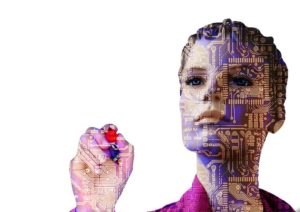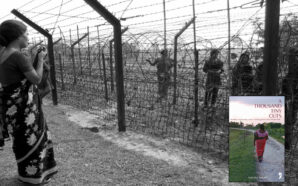Tell us about Data2X – when and why was it launched?
Data drives decisions all around the world, but there are large gaps in data about the lives of women and girls. Data2X believes that we will only be able to truly promote gender equality, alleviate poverty and advance development progress if we improve gender data. Gender data illustrates girls’ and women’s daily realities, needs, accomplishments, and aspirations. It helps reveal unfair differences between males and females in their capabilities and opportunities. It gives policymakers the information to design a world where girls and women can thrive and gives advocates the tools to hold decision-makers accountable.
Data2Xwas announced in July 2012 by the U.S. Secretary of State, Hillary Clinton, as a response to this lack of data and the need for action to address the problem, and our team took up the charge to build and sustain a ‘gender data revolution’. Housed at the United Nations Foundation and funded by the William and Flora Hewlett Foundation and the Bill & Melinda Gates Foundation, Data2X works to improve the availability, quality, and use of gender data by building the case and mobilizing action for gender data and strengthening gender data production and use. We partner with UN agencies, technical experts, governments, civil society organizations, and the private sector to bolster these efforts.
Can you tell us about some of Data2X’s exciting initiatives and partnerships?
Data2X’s current core workstreams include 1) Women’s Work & Employment, which focuses on valuing women’s paid and unpaid work; 2) Women’s Financial Inclusion Data, which convenes partners to build the case for supply side gender data on women’s financial access; 3) Big Data and Gender, which explores how emerging data sources can complement traditional statistics to help fill gender data gaps; and 4) Civil Registration and Vital Statistics (CRVS), which makes the case that women and girls particularly benefit from comprehensive CRVS systems, such as birth registration and marriage certificates, but also that CRVS systems benefit from gender-inclusive design.
We are in the midst of several exciting projects. We are updating our 2014 “Mapping Gender Data Gaps” paperto incorporate more in-depth analysis, including a summary of findings from 15 sub-Saharan African countries and a “how-to” guide for countries to map their own data gaps. Recently, we partnered with Open Data Watch and Devex to collect and share stories where gender data has led to impact – on government programs, policies, social attitudes, and practices. We sharedseveral of these stories at the UN World Data Forum in Dubai in October, and are continuing to collectmore gender data impact stories.
Speaking about gender specifically, why is it important to have data available especially one with a gender lens? How does it benefit women and society as a whole?
Gender data sheds light on the diverse lived experiences of women and girls worldwide. If we have sex-disaggregated data and data on issues that disproportionately affect women—like the burden of unpaid care work or access to obstetric care—policymakers can make more informed policy decisions to combat the issues at hand and improve people’s conditions. If we have no data or incomplete data on the lives of women and girls, we risk overlooking an entire segment of the global population and preventing critical global progress.
What are some of the key areas where data with a gender lens can empower women and how?
Women’s Work and Employmentis an area of importance at Data2X. Collecting gender data on women’s work – paid and unpaid – can shed light on their contributions and burdens in and outside of the formal labor market. Using this data in policymaking makes it possible to improve the economic wellbeing of women and their communities, and to sharpen our understanding of the range of women’s paid and unpaid economic contributions, including household work, child care, and subsistence work. Women’s Financial Inclusion, another core workstream at Data2X, focuses on understanding how women save money; what access, if any, they have to bank accounts and financial services; their barriers to these services, and how we can work to alleviate them. We recognize that financially empowered women can help alleviate poverty and spur economic growth in their communities and their countries. Additionally, Civil Registration and Vital Statistics(CRVS)—the continuous recording of vital events like birth, death, marriage, divorce—is another key area where women and girls can benefit greatly when gender data is collected and used. For example, birth registrations can reduce child marriage in the long term, and marriage certificates can confer fair rights to women in a divorce or following death of a spouse or legal partner.
How can big data impact policymaking especially when it comes to women’s empowerment – and by extension women’s economic empowerment?
Big data, i.e., the large amounts of digital data continually generated as a by-product of everyday interactions with digital products or services, can be a powerful resource for policymakers, supplementing information on the lives of women and girls that can be missed in official statistics collection. Data2X has supported pilot projects that explore the use of big data generated by social media, mobile phone use, credit card exhaust, and geospatial sources, to fill gender data gaps. For example, one pilot found that data from cell phones and credit cards can offer insights on women’s economic behaviors under different environmental and financial conditions and contexts; another project explores how high-resolution geospatial data can reveal disparities in boys’ and girls’ health in under-surveyed areas. To build on these early findings, in 2017, we launched the inaugural Big Data for Gender challenge, a call for researchers to apply big data innovations to fill gender data gaps.
Big data tools show a lot of potential to improve the lives of women and girls, but we must also be mindful of its risks and limitations. Ultimately, big data and official statistics must be used in conjunction with one another, equipping decisionmakers with data that is more accurate, comprehensive, and inclusive.
 Can you explain for our readers what gender (or sex) aggregated data entails and how it affects different topics from, for eg, female farmers to gender-based violence?
Can you explain for our readers what gender (or sex) aggregated data entails and how it affects different topics from, for eg, female farmers to gender-based violence?
Gender data includes data that is disaggregated by sex, such as school enrollment rates; or is specific to women’s biology; or on topics for which there are culturally-held notions of women’s roles, such as unpaid care work. Currently, we only have a partial snapshot of the lives of women and girls and the obstacles they face because there are gaps in gender data worldwide. More and better collection of gender data to fill these gaps could allow us to understand things like: how much time female farmers spend harvesting their crops; if and how often women and girls experience gender-based violence; and the global prevalence of mental illness among women and girls.
There is a saying ‘What hasn’t been counted, doesn’t count’ – a very eye-opening yet harsh reality, how would you respond to this quote?
At Data2X, we have a similar saying: “If data isn’t from all of us, data isn’t for all of us.” Both quotes address the same point: if certain groups are excluded from the data, we risk failing to respond to their needs and opportunities to improve their lives. In the policy realm, our decisionmakers count on good data to inform decisions, and to track progress on those decisions. Similarly, civil society count on good data to pinpoint areas of need, and to hold decisionmakers accountable. And yet, historically, women and girls have been undercounted in data collection. If the data simply doesn’t exist, then how can we develop policies to address inequality, and know if these policies are effective in improving gender equality?
What are some of the challenges when it comes to making more and more gender-centric data available?
One of the challenges in making more gender data available is making sure it’s collected—and collected accurately—in the first place. This requires sustained financing and resourcing at the country-level to ensure that National Statistical Offices (NSOs) have the capacity to collect quality gender data across the country. Countries need resources to ensure statisticians are trained in gender statistics and understand where bias can occur in the data value chain. Another challenge is ensuring that data definitions and practices are harmonized among data producers, to ensure data comparability.
There has been a conversation among researchers that while there is an availability of both qualitative and quantitative data, the actual process of seamlessly combining the two is still murky ground? What are your thoughts?
The intersection of qualitative and quantitative data is very important, but not an area of focus for Data2X. We focus our efforts on the data most often being used by policymakers.
Do you think data can drive gender equality? (if you could detail your response)
We think people are the drivers of gender equality, but data is part of the fuel. Accurate, comprehensive, and inclusive data is required for global progress. Gender data gaps are pernicious and deeply-entrenched and addressing them is a critical first step toward gender equality; however, we cannot achieve gender equality without a widespread commitment to not only collecting gender data, but also using it to inform policy and programmatic decisions. Data2X is committed to showcasing case studies where use of good gender data led to improved outcomes with the hope that these stories encourage commitment to gender data.
 In order for women and society as a whole to benefit, what in your view is an effective approach to data acquisition, analysis and use?
In order for women and society as a whole to benefit, what in your view is an effective approach to data acquisition, analysis and use?
The data value chain (pictured below) is effective in showing the ideal path that data takes to get from collection to publication to uptake and finally, impact. By illustrating the entire life cycle of data, it helps ensure that data producers and users are working together to achieve maximum benefit for women and their societies.
In your opinion, how can data be translated into implementable policies regarding women’s health, education, gender-based violence and access to labour markets?
Good data drives good decisions. If policymakers are armed with comprehensive data that reflects the realities of women’s lives, they are better equipped to make realistic, achievable policies that can improve women’s health, education, safety, and access to economic opportunity, among many other things. A great real-world example of data leading to impact occurred in Vietnam, where, after collected data showed that 1 in 3 women experience physical or sexual violence from their partner at some point in their lives, the government, international agencies, and civil society responded with widespread legislative, financial, and advocacy efforts to drastically curb gender-based violence.
What is the added value of leveraging gender data for sustainable development?
Gender data allows us to better understand the scope of issues in each country; monitor progress on key Sustainable Development Goal (SDG) indicators; and improve development outcomes. Gender data is integral for monitoring gender equality and achieving the SDGs. However, gender data is not available for every relevant SDG indicator and only 13% of countries worldwide have a regular budget for its collection and use. While recognition of the importance of gender data by leaders, UN agencies, civil society, and the private sector is gaining traction, we will need sustained investment in gender data to get the most out of our sustainable development efforts.
Coming back to Data2X, what are some of the challenges and milestone achieved and what is the way forward?
One big challenge in the early days that is now an achievement – is that we used to spend a lot of time defining gender data and why our work was even needed in the first place! But now, it is quite common for there to be discussion about gender data in global meetings, within countries, and among journalists and we get calls frequently from media outlets, government partners, companies, and schools requesting more information. It’s been a privilege to be a part of the journey from a decidedly ‘niche’ topic to something that is present in mainstream conversation.
Data2X continually spotlights the importance of gender data in development and policy agendas. Since our founding, we have released a number of briefs, reports, and products on gender data across multiple sectors, from women’s financial inclusion and economic empowerment to CRVS and big data. We’ve also convened partners at international UN moments and organized conversations by experts on new approaches and findings to fill gender data gaps, ensuring gender data is central to discussions at the UN Statistical Commission, the UN Commission on the Status of Women, the UN World Data Forum, and the UN High-level Political Forum, among others. Lastly, a key challenge working in a technical topic is that people find it hard to understand, and inaccessible – it’s our job to help demystify, and communicate that gender data is not only for statisticians, and data scientists – it is for all of us to understand and utilize to achieve the world we want.











